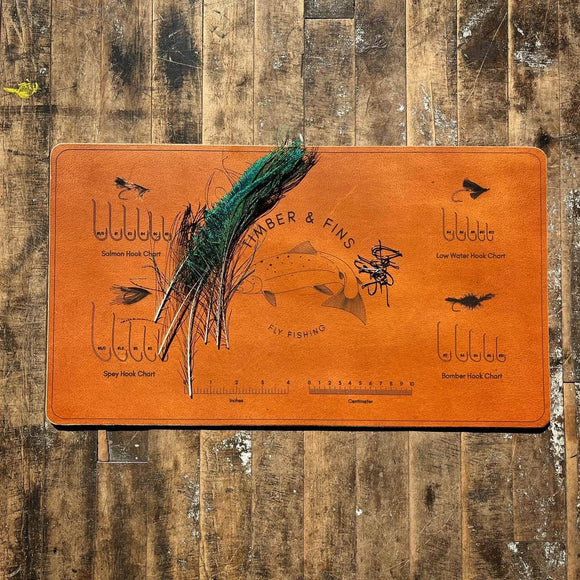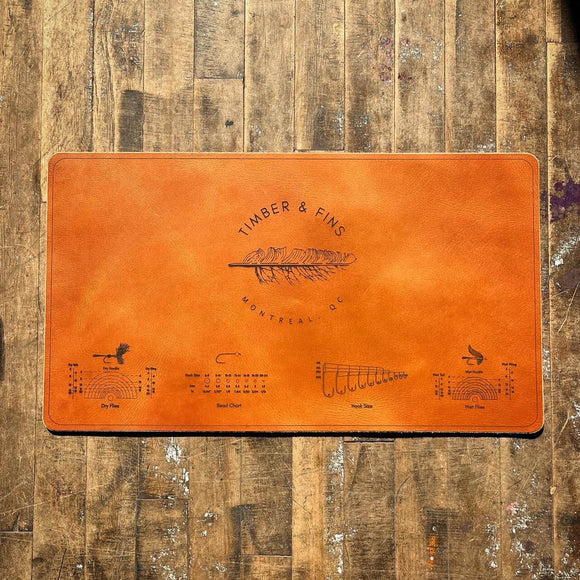Par Kenzie Kozera
Souvent un incontournable dans la boîte des pêcheurs de saumon à travers le monde, le Willie Gunn a connu de nombreuses itérations ou variations. Arborant le noir, l'orange et le jaune, ce modèle reste attaché au leader de nombreux poursuivants de saumon, de la saison précoce jusqu'à la « fin de saison ». Les modèles en marabout tels que le Black and Blue, Slime, Canary, et bien sûr... Willie Gunn ont gagné en popularité sur de nombreuses rivières de l'Atlantique canadien. Pour cette raison, j'ai pensé qu'un marabout à thème WG pourrait constituer un bon point de départ pour une série de blogs sur la fabrication de mouches étape par étape.
Recette:
Hameçon/Tuyau : Hameçons streamer avec une longueur de tige de 5x-7x (par exemple Partridge CS17), grands hameçons à œil relevé pour saumon (par exemple 1/0), ou dans cet exemple, un montage avec un tube réducteur de 1,8 mm/3,0 mm.
Body : mylar holographique orange.
Côtes : ovale doré moyen
Hackle/aile
1ère couche : renard arctique orange filé en boucle de dubbing et enroulé
2e couche : marabout jaune
3e couche : marabout orange
4e couche : marabout noir
*ajoutez un flash selon vos souhaits
Instructions étape par étape :

Étape 1 : choisissez votre châssis pour la mouche. En raison de la longueur typique du marabout, les options à hampe plus longue sont les plus adaptées.

Étape 2 : attacher le corps de la mouche
Cette étape varie en fonction du modèle ou de la méthode du tyer (certains ne prennent pas la peine d'attacher les corps aux mouches en marabout).
Dans cet exemple, un côtes ovales moyennes a été placé sur du tinsel holographique orange #12.

Étape 3 (Optionnel) : J'ai remarqué que dans les courants d'eau plus rapides, les mouches marabou plus espacées peuvent se "collapser" et perdre leur profil plus large et pulsant. Lorsque je monte des mouches pour des conditions d'eau plus fortes (le moment typique où je choisis personnellement ces mouches), j'ai commencé à adopter une approche similaire à celle du montage des intruders en plaçant de grosses boules de dubbing et/ou en enroulant un peu de renard arctique dans une boucle de dubbing.
Prenez mes réflexions à ce sujet avec un grain de sel, car elles sont un mélange d'anecdotes et incluent des contributions d'autres tyers. Cependant, lorsqu'on pêche dans une eau haute et trouble, le profil plus grand et plus visible avec cette forme de sous-aile peut être utile.


Étape 5 : Fixez votre hackle secondaire en marabout (dans ce cas, une couche orange).

Étape 6 : Ajouter le flash.

Étape 7 : Ajouter la dernière couche de marabout noir.

Étape 9 : attachez la mouche à votre bas de ligne, lancez-la dans votre fosse ou courant préféré, plantez vos talons, et accrochez-vous.
MOUCHES


Ensemble de mouches Steelhead


Ensemble de mouche à saumon


Ensemble de mouche à saumon #2

Black Silver Tip
MONTAGE DE MOUCHE


Napperon de montage "Heritage"










